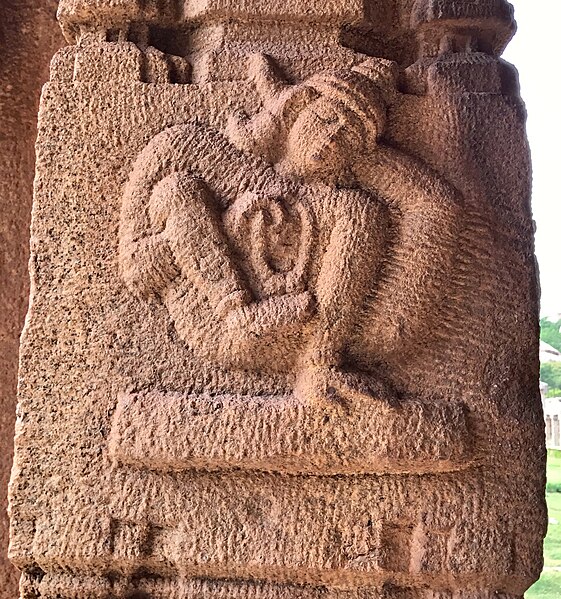Virasana or Hero Pose is a kneeling asana in modern yoga as exercise. Medieval hatha yoga texts describe a cross-legged meditation asana under the same name. Supta Virasana is the reclining form of the pose; it provides a stronger stretch.
Virasana
Virasana in the Mughal illustration to the treatise Bahr al-Hayat, c. 1600-1605. Chester Beatty Library
Early usage: health and beauty guru Marguerite Agniel in Supta Virasana. Studio photograph by John de Mirjian, c. 1928
An āsana is a body posture, originally and still a general term for a sitting meditation pose, and later extended in hatha yoga and modern yoga as exercise, to any type of position, adding reclining, standing, inverted, twisting, and balancing poses. The Yoga Sutras of Patanjali define "asana" as "[a position that] is steady and comfortable". Patanjali mentions the ability to sit for extended periods as one of the eight limbs of his system. Asanas are also called yoga poses or yoga postures in English.
Asanas in varied contexts. Left to right, top to bottom: Eka Pada Chakrasana; Ardha Matsyendrasana; Padmasana; Navasana; Pincha Mayurasana; Dhanurasana; Natarajasana; Vrkshasana; Yashtikasana
Mould of Pashupati seal from the Indus Valley civilization, c. 2500 BC, its central figure in a pose resembling Mulabandhasana.
A page from Patanjali's Yoga Sutras and Bhasya commentary (c. 2nd to 4th century CE), which placed asana as one of the eight limbs of classical yoga
Relief statue in Achyutaraya temple, Hampi, Karnataka showing an unidentified hand-balancing asana, 16th century







